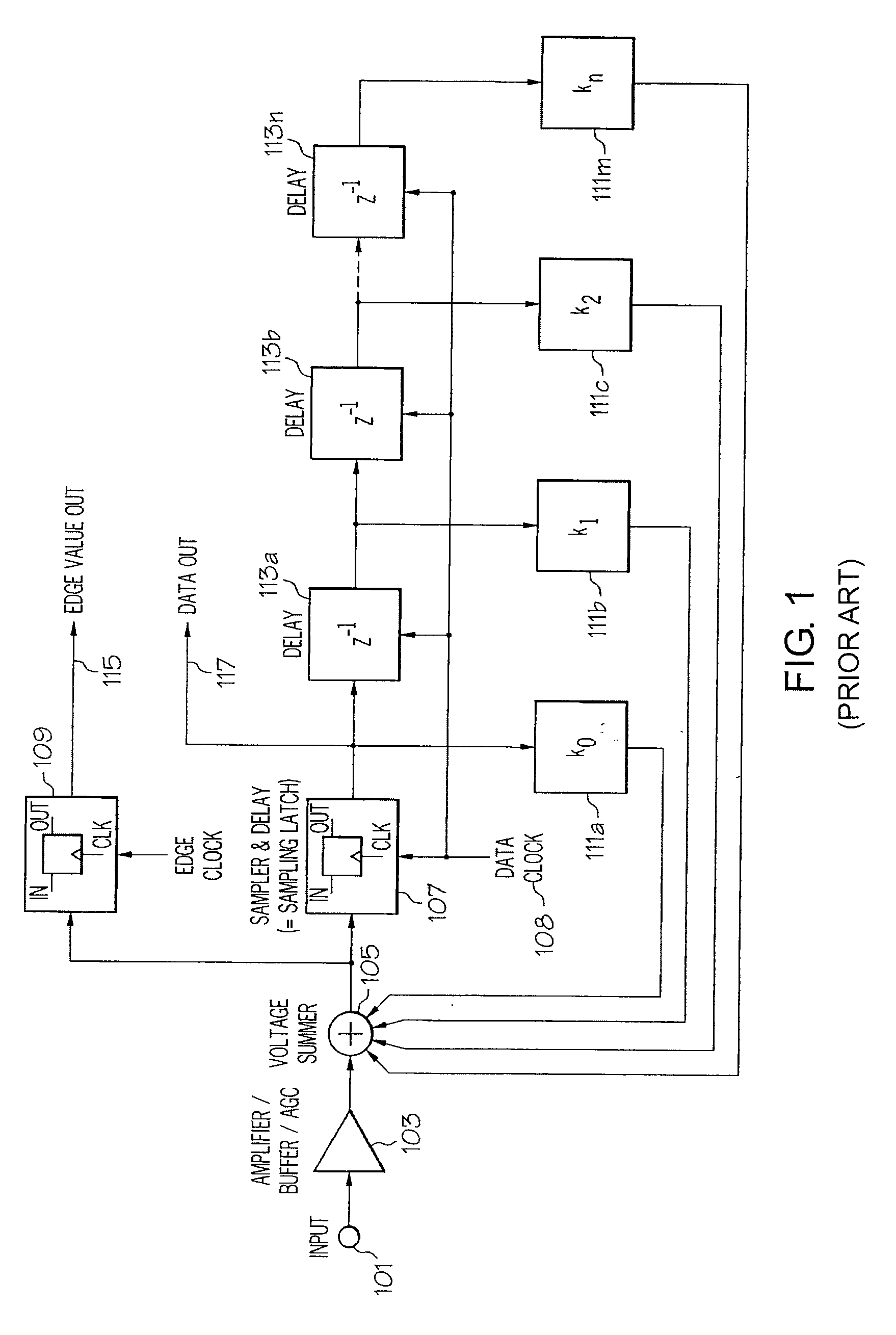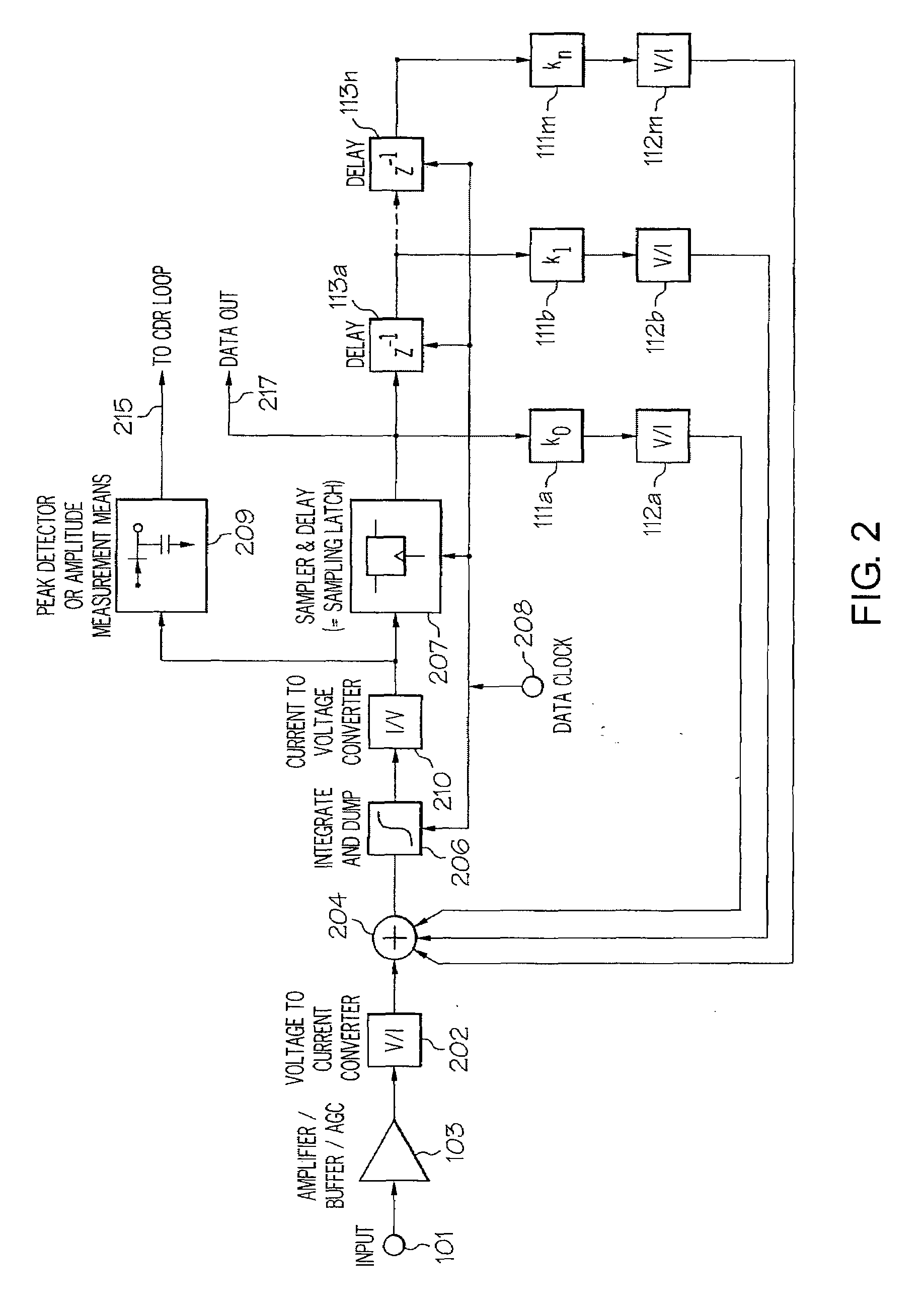Structure for one-sample-per-bit decision feedback equalizer (DFE) clock and data recovery
a one-sample-per-bit decision feedback equalizer and data recovery technology, applied in the direction of pulse manipulation, pulse technique, digital transmission, etc., can solve the problem of increasing the bit error rate (ber), key source of complexity in equalization-based receivers is the number of samples per bit, etc., to reduce the bit error rate (ber) and maintain the peak energy
- Summary
- Abstract
- Description
- Claims
- Application Information
AI Technical Summary
Benefits of technology
Problems solved by technology
Method used
Image
Examples
Embodiment Construction
[0020]The present invention provides a receiver circuit, method and design architecture of a decision feedback equalizer (DFE) Clock-And-Data Recovery (CDR) architecture that utilizes / produces one sample-per-bit in the receiver and reduces bit-error-rate (BER).
[0021]With reference now to the figures, and in particular with reference to FIG. 2, which illustrate a circuit design of the enhanced DFE architecture, according to one embodiment of the invention. Within the descriptions of the figures, (i.e., relative to previously described FIG. 1) similar elements are provided similar names and reference numerals as those of the previous figure. Where the later figure utilizes the element in a different context or with different functionality, the element is provided a different leading numeral representative of the figure number (e.g, 1xx for FIG. 1 and 2xx for FIG. 2). The specific numerals assigned to the elements are provided solely to aid in the description and not meant to imply any...
PUM
 Login to View More
Login to View More Abstract
Description
Claims
Application Information
 Login to View More
Login to View More - R&D
- Intellectual Property
- Life Sciences
- Materials
- Tech Scout
- Unparalleled Data Quality
- Higher Quality Content
- 60% Fewer Hallucinations
Browse by: Latest US Patents, China's latest patents, Technical Efficacy Thesaurus, Application Domain, Technology Topic, Popular Technical Reports.
© 2025 PatSnap. All rights reserved.Legal|Privacy policy|Modern Slavery Act Transparency Statement|Sitemap|About US| Contact US: help@patsnap.com



